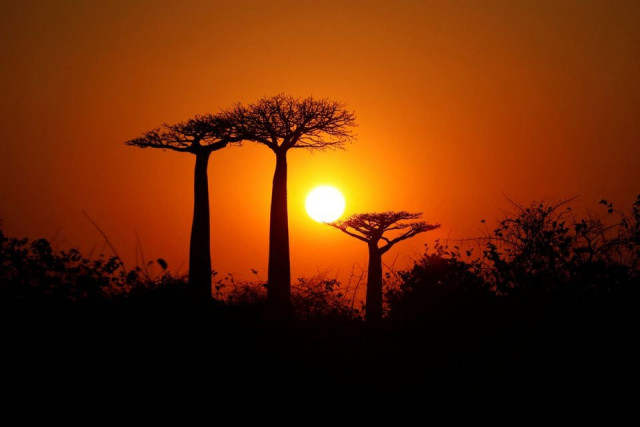Scientists count the world's tree species
Researchers unveiled the world’s largest forest data base, which includes more than 44 million individual trees

From the monkey puzzle tree of Peru to the Tasmanian blue gum of Australia, from the baobabs of Madagascar to the giant sequoias of California, the world has an abundance of tree species. How many? A new study has the answer.
Researchers unveiled the world’s largest forest data base, which includes more than 44 million individual trees at more than 100,000 sites in 90 countries – helping them calculate that Earth boasts about 73,300 tree species. Is.
This figure is about 14 per cent higher than the previous estimate. In total, about 9,200 exist based on statistical modeling, but have not yet been identified by science, with a large proportion growing in South America, the researchers said.
South America, home to the vastly biodiverse Amazon rainforest and far-flung Andean forests, was found to have 43% of the planet’s tree species and the greatest number of rare species, about 8,200.
Trees and forests are much more than just oxygen producers, said Roberto Cazzola Gatti, Professor of Biological Diversity and Conservation at the University of Bologna in Italy and lead author of the study published in the journal. Proceedings of the National Academy of Science,
“Indeed, our society often treats forests as natural resources as timber and tree trunks, ignoring their fundamental role to mankind in providing ecosystem services that are only economic – even if important – Wood, paper and pulp go behind production. From trees and from forests humanity gives inspiration, relaxation, spirituality and essentially the meaning of life,” Gatti said.
About 27,000 known tree species were found in South America and 4,000 are yet to be identified. Eurasia has 14,000 known species and 2,000 unknowns, followed by Africa (10,000 known/1,000 unknowns), North America including Central America (9,000 known/2,000 unknowns), and Oceania including Australia (7,000 known/2,000 unknowns).
“By establishing a quantitative benchmark, our study can contribute to tree and forest conservation efforts,” said study co-author Peter Reich, a forest ecologist at the University of Michigan and the University of Minnesota.
“This information is important because tree species are becoming extinct due to deforestation and climate change, and to understand the value of that diversity we need to know what it is in the first place before we lose it,” Reich said.
“Tree species diversity is critical to maintaining healthy, productive forests and to the global economy and nature.”
The study did not tally the total number of individual trees globally, but 2015 research led by a co-author put the figure at about 3 trillion.
The new study identified global tree diversity hot spots in tropical and subtropical regions in South America, Central America, Africa, Asia and Oceania. It also determined that about a third of the known species could be classified as rare.
The researchers used methods developed by statisticians and mathematicians to estimate the number of unknown species based on the abundance and presence of known species. He said that tropical and subtropical ecosystems in South America could support 40% of these yet-to-be-identified species.
“This study reminds us how little we know about our planet and its biosphere,” said study co-author Jingjing Liang, a professor of quantitative forest ecology at Purdue University in Indiana. “We need to learn much more about the Earth so that we can better preserve it and conserve natural resources for generations to come.” Reuters
#Scientists #count #worlds #tree #species #spoiler #bunch #Tribune #India #Source #Scientists count world’s tree species (spoiler: it’s a bunch): The Tribune India



















COMMENTS
Comments are moderated and generally will be posted if they are on-topic and not abusive.
For more information, please see our Comments FAQ